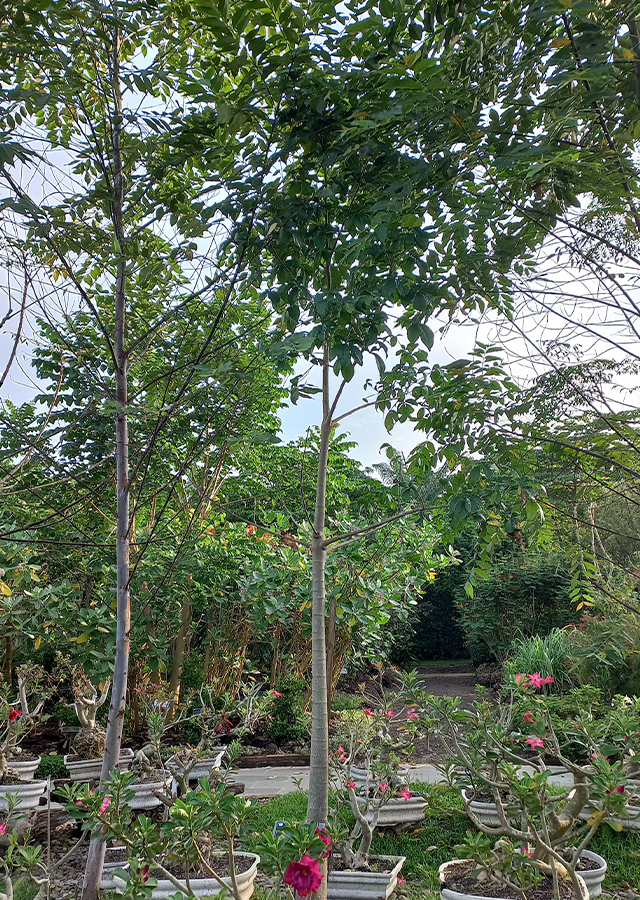Traditional Herbs from Adansonia digitata
impotence
- Prepare the roots of the baobab plant and wash them until clean.
- Boil the roots until boiling.
- Strain the boiled product.
- Drink while it's warm.
sick_body
- Prepare the bark \u00a0baobab plant then wash until clean.
- Boil the bark until it boils.
- Strain the boiled product.
- Drink while it's warm.
What is Adansonia digitata Looks like??



Parts of Adansonia digitata that could be used
- Leaves", "Seeds", "Bark", "Fruit", "Roots
Adansonia digitata Distribution
The baobab tree originates from Africa and the Arabian Peninsula and has been introduced to Bangladesh, Comoros, India, Madagascar, Mozambique Channel I, Sri Lanka, and Vietnam. The baobab tree is one of the oldest and largest types of trees from the Angiospermae family and can live for more than a thousand years. This multipurpose tree can store water in its trunk and is believed to be the element that has provided food, water, clothing, shelter, medicine and has even been a traditional burial place for West African troubadours for hundreds of years. In traditional African medicine, this plant is used to treat various diseases, one of which is to treat dysentery. Currently, this tree is a popular species that can be used as a bonsai plant, and is also used in the cosmetics and fuel (biofuel) industries.Agroecology of Adansonia digitata
Baobab can grow well in lowland tropical areas up to an altitude of 1,500 m above sea level. Prefers areas with an average annual temperature of 20-30 °C, average annual rainfall of 250-1,000 mm. A position in full sun and soil with an acidity (pH) lower than 6.5 is suitable for the growth of baobab trees.
Morphology of Adansonia digitata
- The roots have extensive lateral roots up to 50 m long, the root tips are often tubers. The main roots are relatively shallow.
- Thick stems (large diameter), have smooth surface skin, reddish brown to gray in color, soft and has elongated, branched fibers.
- The leaves are divided into 5-7 leaflets, green in color, alternately located at the ends of the branches. The leaf blades are elliptical to ovate-elliptical, the apex is tapered and the base is decurrent.
- Single flowers, located. in the leaf axils near the tips of the branches, white, large (up to 20 cm in diameter), pendulous or hanging on a stalk, sulfur-scented. Each flower has five petals with many stamens.
- Single fruit, ovate-oval with up to 35 cm long and 13 cm wide. The flesh is white, powdery and tastes sour. The skin of the young fruit is green and becomes brown when ripe.
- The seeds are kidney-shaped and covered with a hard skin, small in size, colorful dark brown until reddish black with smooth testa.
Cultivation of Adansonia digitata
- Generative propagation (seeds).
- After the seedlings are 3 - 4 months old and reach a height of 40-50 cm, the plants can be transplanted.
Adansonia digitata, more details :
Chemical Content of Adansonia digitataProcyanidin, flavonol glycosides, phenolics, hydroxycinnamic acid glycosides, iridoid glycosides, phenylethanoid glycosides, ascorbic acid, linoleic acid, oleic acid, palmitic acid, stearic acid, uronic acid.
Benefits of Adansonia digitata
Treats kidney and bladder diseases, stomach, joints, tooth and gum pain, colds, fever, body aches, fatigue, diarrhea, dysentery, insect bites, overcomes respiratory problems (asthma), eye inflammation, cleans wounds, overcomes impotence, stimulates production. breast milk in nursing mothers. Has activity as an expectorant (phlegm thinner).
Simplisia of Adansonia digitata
Another Facts for Adansonia digitata :
Synonym of Adansonia digitataAdansonia bahobab L., Adansonia integrifolia Raf., Baobabus digitata (L.) Kuntze
Habitus of Adansonia digitata
Tree. Annual tree, reaching 20-30 m in height
Habitat of Adansonia digitata
- Forest
- Grassland
No comments:
Post a Comment